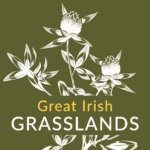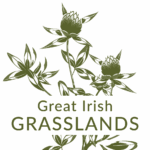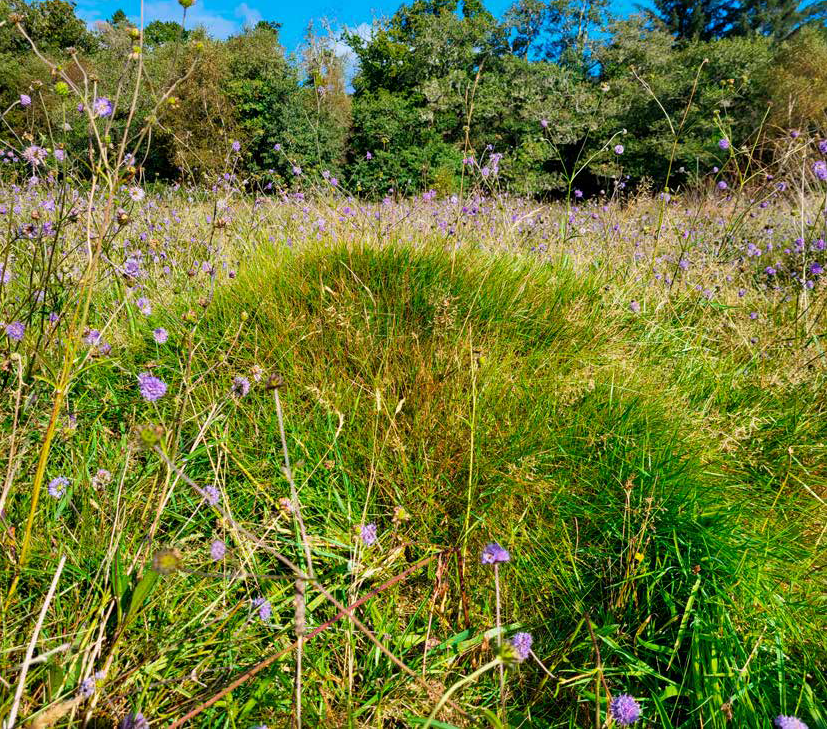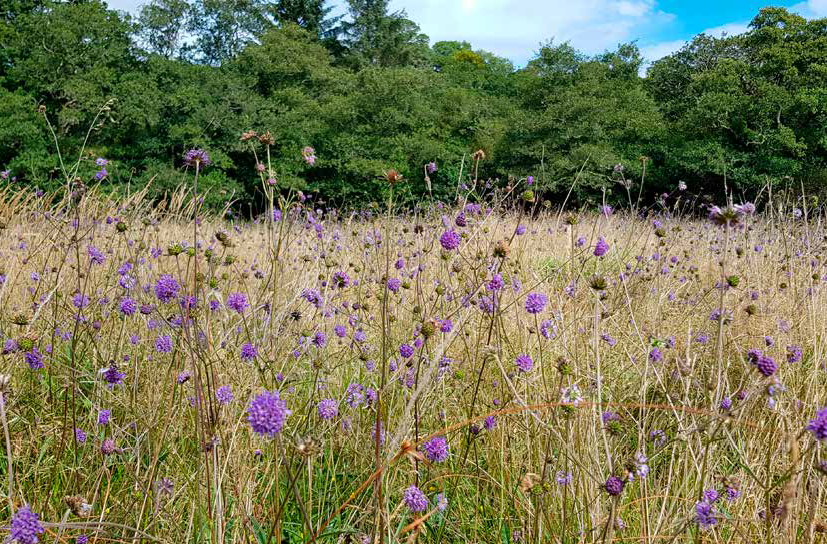‘Big Meadow’ is an island of grassland in the middle of the almost entirely wooded Glengarriff Nature Reserve (301 ha). It adds to the diversity, and is home to many invertebrates. The area has not been ploughed, reseeded or fertilised in living memory, but has been lightly grazed in autumn by cattle for many years.
This long history of low intensity management gives the grassland a special character. It has many anthills (see photo on left), which form their own microclimate, their grassy humps slightly warmer and drier than the surrounding vegetation. It is possible that some of these anthills are over 100 years old. Another striking feature is the swathes of Devil’s-bit Scabious, with their sea of purple-blue blossoms in late summer. Even in September, the grassland buzzes with life as pollinators of many kinds are attracted to this late source of pollen. Devil’s-bit Scabious is also the food plant of the rare Marsh Fritillary, and these pretty butterflies can be seen flying here in June, along with other species such as Meadow Brown and Ringlet. In early summer there are many Heath Spottedorchids, easily seen from the path that runs along the edge of the meadow. Other parts of the grassland are quite acidic with damp hollows, rushy patches and tussocks of Purple Moor-grass.



